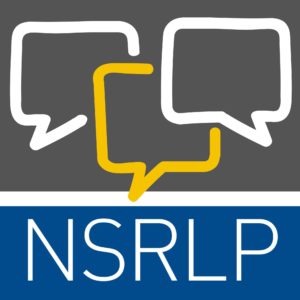This week’s guest blog is written by Kate Kehoe. Kate was counsel to the Children’s Aid Society of Toronto from 1999 – 2007. She is now a consultant in Ottawa, and acted as a Policy Analyst & Writer for the Motherisk Commission.
As regular readers of the NSRLP blog know, the use of summary judgment motions (SJMs) has a serious and detrimental impact on self-represented litigants. In recent years, these motions have been brought with increasing frequency by Children’s Aid Societies (CAS) to obtain orders against parents and other caregivers. However, the recent report of the Motherisk Commission, coupled with the Supreme Court’s decision in R. v. Pintea, appear to be changing the courts’ approaches to these motions – for the better.
Summary Judgments in Child Protection Cases
The judge hearing these motions must determine whether there is a “genuine issue requiring a trial”. If s/he determines there is not, the judge can make an order for the placement of the child – including permanent removal from the parents – without a trial. The consequences of such a decision are obvious.
When I practiced child protection law, SJMs were very rare. Agencies typically brought them where the evidence was so overwhelming that the court would have no choice but to find the child in need of protection and/or make the order being sought by the CAS. SJMs are now brought frequently, justified as a means of using limited court resources in a timely and cost-effective manner – admittedly a serious concern, given the high volume of child protection cases in the courts, and the resulting delays in finding permanent solutions for children. I was shocked to realize how common these motions have become, and how often judges are willing to draw conclusions about significant contested facts without a full examination at trial.
The Motherisk Commission
For more than two decades, the Motherisk Lab at the Hospital for Sick Children tested thousands of hair and urine samples of parents and children for cocaine, alcohol and other substances, usually at the request of Children’s Aid Societies. Following significant media attention, a judicial review of the lab’s practices determined that the lab’s results were “inadequate and unreliable” for use in child protection and criminal cases.
A second judicial review, the Motherisk Commission led by Justice Judith Beaman of the Ontario Court of Justice, focused on child protection cases and reviewed 1300 cases in which Motherisk tests were used between 2000 and 2015.
It found 56 cases where the test results had a substantial impact on the outcome. Behind each of these 56 cases, “families were broken apart and relationships among children, siblings, parents, and extended families or communities were damaged or lost” (p. vii).
The Commission’s report also raised concerns about the disproportionate impact of the testing on Indigenous and racialized families. These families may have been tested at higher rates because of stereotypes about race and Indigeneity and alcohol and drug use. There may also have been higher rates of false positives in these cases, because drugs may be absorbed more readily into dark hair.
Summary Judgment May Erode Justice
Over the course of her review, Justice Beaman and her team made a number of troubling observations about the approaches that CAS staff, lawyers and courts took to the cases they reviewed. Among them was the observation that the test results were often admitted into evidence without the usual checks and balances. One area of particular concern to the Commission was the use of the Motherisk tests in summary judgment motions, without a full trial examination.
The SJM rules require the parents to provide an affidavit setting out the specific facts requiring a trial. “Mere allegations or denials” of the Children’s Aid Society’s evidence are not sufficient to defeat a summary judgment motion. As Justice Beauman noted in her report, a parent’s insistence that a test result is inaccurate can be dismissed as a “mere allegation or denial” of the Society’s evidence. This effectively required parents to prove the unreliability of the testing – an insurmountable task, even for people with lawyers. Even more troubling was Justice Beauman’s observation that where parents insisted that the test results were wrong, this was often held against them – agencies and courts told these parents that their inability to accept the test results showed a lack of judgment and insight.
Court rules stipulating that expert evidence meet certain criteria of reliability before it is considered seemed to have been ignored in many cases. Indeed, even basic rules of evidence, such as the rule against hearsay, were routinely ignored. As the Commissioner noted,
“It has been held repeatedly that evidence that is not admissible at trial should not be admitted at a summary judgment motion, although not all courts agree. We saw a troubling tendency for the court to make orders on these motions based on evidence that would not be admissible at trial. For example, the societies’ affidavits often included hearsay statements by workers about the results of Motherisk tests without any direct evidence from Motherisk Laboratory staff. Most importantly, Laboratory staff were rarely cross-examined on the test results, interpretation letter or reports filed in these motions.” (p.112)
Recommendations and Reforms…
The Commissioner made a number of recommendations to improve parents’ ability to respond in child protection cases. Several of these recommendations would change the way expert evidence is used, requiring proper expert reports and, in most cases, allowing for the cross-examination of those experts in summary judgment hearings. The Commissioner also recommended that only evidence which is admissible at trial be used in SJMs.
The Ontario government accepted Justice Beaman’s recommendations, and changes to the Family Law Rules are being considered. In the meantime, there have been some encouraging decisions from the courts endorsing a more cautious approach to summary judgment motions, particularly in cases involving self-represented litigants.
…And Important New Case Law
In Catholic Children’s Aid Society of Toronto v. C.G. and D.S, Justice Stanley Sherr dismissed a summary judgment motion brought by the Catholic CAS because the agency’s evidence was filled with hearsay. He noted the Motherisk Commission’s position that evidence in SJMs only be admitted if it would be admissible at trial. Justice Sherr also referred to R. v. Pintea and the need for courts to be mindful of the Canadian Judicial Council’s Statement of Principles on Self-Represented Litigants and Accused Persons, particularly the following:
a) Access to justice for self-represented persons requires all aspects of the court process to be, as much as possible, open, transparent, clearly defined, simple, convenient and accommodating.
b) Judges and court administrators should do whatever is possible to provide a fair and impartial process and prevent an unfair disadvantage to self-represented persons.
c) Judges should ensure that procedural and evidentiary rules are not used to unjustly hinder the legal interests of self-represented persons.
Justice Sherr then held that the repeated use of hearsay in CAS affidavits “unjustly hindered the legal interests of the self-represented mother”, noting that it would not be realistic or fair to expect the mother to respond to the volume of inadmissible evidence in the CAS materials. This included numerous hearsay comments by the mother’s family members, doctors, a psychiatrist, the school principal and the child. Justice Sherr also expressed concern about the mother’s lack of a lawyer, noting that she had been denied Legal Aid. He asked duty counsel to refer her to a lawyer to get advice about her options, and invited her to bring an application for the appointment of state-funded counsel (a “GJ” application, similar to a Rowbotham application).
In another recent case involving an unrepresented mother, Justice Sheilagh O’Connell adopted Justice Sherr’s approach, quoting his comments about the Motherisk Commission and the Statement of Principles. Justice O’Connell said that it was not appropriate or fair to use the summary judgment process “particularly given that the mother is self-represented, the stakes for her are very high and granting the motion will deprive her of the procedural safeguards of a trial.”
Managing an Imbalance of Power
Child protection cases involve the exercise of significant power by the state, against parents who are almost always struggling with significant challenges – including poverty, racism, problems with substance use, and mental illness.
The potential outcomes include the permanent removal of a child from her family, through adoption or other means: a devastating, life-altering consequence which most parents (and their children) would consider worse than virtually any other action of the state, including imprisonment.
For this reason, the protections of the Charter apply in child protection cases, just as they do in criminal proceedings. Yet concerns about the high volume of cases has led not to the appointment of more family court judges (unlike the response to R. v. Jordan in the criminal context). Instead, judges and agencies have increasingly turned to the use of summary judgment procedures, which deny parents – and their children – the right to have the state’s evidence carefully and thoroughly tested at trial. No one in the justice system would seriously suggest that criminal charges be dealt with through summary judgment motions, even in the face of backlogs which have led to judicial stays of proceedings and the release of people accused of very serious crimes.

The Motherisk Commission was the first public inquiry to focus on miscarriages of justice in child protection cases. In the 56 substantial impact cases identified by the Commission, initiatives meant to protect children and speed up the process – including relaxed rules of evidence and summary judgment procedures – may have contributed to the wrongful and tragic removal of children from their families. So far, only a handful of those families have been able to reunite.
I am hopeful that other courts will follow the lead of Justice Sherr and Justice O’Connell, and restrict the use of SJMs in child protection cases, promoting meaningful Access to Justice for parents – and children – in the future.


Family Court is a house of horrors to anyone with sense and sensibilities.
“The Ontario government accepted Justice Beaman’s recommendations,”
OK BUT
Rule 2 in Civil and Rule 12 in Small Claims Court (The People’s Court), it is even worse than Summary Judgement
Using these new rules introduced in 2014 Learned Counsel writes a letter to a particular Judge to dismiss the Self-Represented case.
The Letter is NOT shared. Court administrators will NOT permit a self-represented to view this letter – in their file.
Within 10 or 20 days the Self-Represented MUST answer UNKNOWN reasons as to why their case must not be dismissed.
e.g. Court actions between UNRELATED parties that the letter states the judge should consider.
The Ontario government accepted Justice Beaman’s recommendations????Q!?!?!
They did NOT address the impact of RULE 2!
NOTE: I certainly did not find any reference to the much more insidious rule
I have been through it with our son’s case, many conferences and zero accomplished at a cost that would knock your socks off. It’s disgusting the carrie on and on.)
all across this country, the judicial system is not transparent with the self represented, We are treated with complete contempt. And the fact that they “win” by refusing to disclose evidence,, dates and times of court etc etc, means they could never win unless they were acting dishonestly. now that is a real statement. what shameful behavior. it is in fact, bullying. The fact that our courts continue to act this way, while the world is chanting, end bullying, is a clear indication that they never heard one word of what accountability. integrity, or honesty, actually meant. my case is similar. very similar. and I suspect there are a good many more of us. labs producing reports that no one ever gets to examine, no protection for the public from the so called :expert”. if we even had an even playing field, we could destroy their cases. That is why they have never let us HAVE a level playing field..
I am so delighted to read this. I was this single mother, insisting that dna testing in my matter was wrong, and no safeguards existed at all to ensure the evidence met any standards. I have now obtained an expert review of some of the material, what little I could get the labs to release, and there is evidence of information sharing between the labs, there is no support for identification of who actually attended the lab for sample taking other then a lab employee. The sample sizing required to have run the testing claimed to have been run in 1994 was not safely possible to have been taken from a child of this size and age, and all the dates on the samples and testings have no chain of custody, and they are all wrong. I was attacked viciously by the courts for asking for a discovery of evidence and witnesses. the file was illegally transferred out to another district without notification to me, and they had the case dismissed without my being there. I refiled the case, and was summary judgemented out. All of this in my opinion is heresay/. I asked for the opportunity to have the evidence examined, and was denied. And yes, they wanted ME to prove the lab was wrong, without examination of the evidence, without full disclosure of the file, and without an independent examiner. You may see how I feel poorly about our judicial system.
can the same legal principals been looked at in dna testing labs?? can any one tell me if the courts of BC are likely to be adopting this new law and what about cases that were dealt with exactly like this, in the 1990’s my case is this case only with dna testing and when I said the lab was wrong. no one would listen to me, and I was attacked by the courts for saying so. Is this law coming to BC??? Will it apply to other “expert evidence lab reports”? I look forward to your response
All the while the CAS was taking advantage of these results and destroying families, and in some cases even though presented with solid evidence of substance abuse, it was ignored. They (CAS) have zero credibility, no accountability to anyone nor transparency.